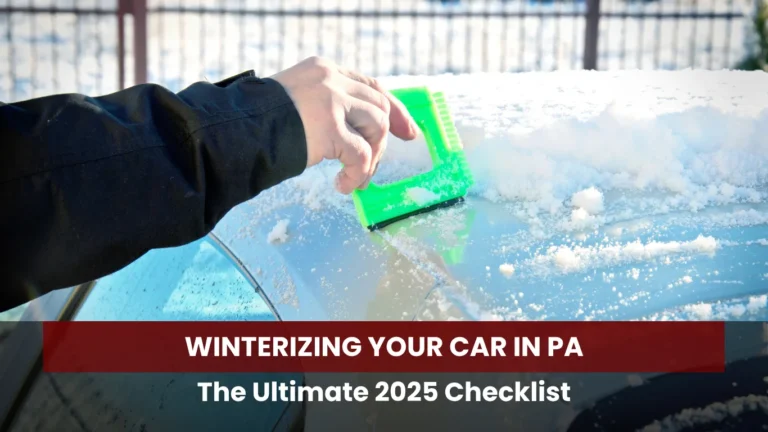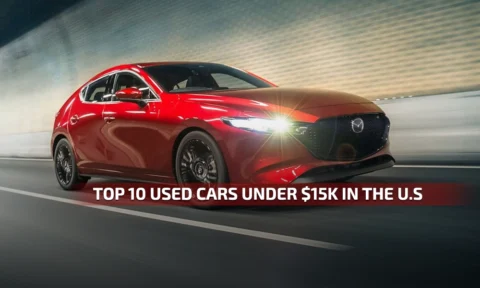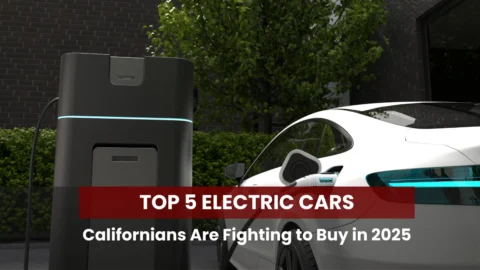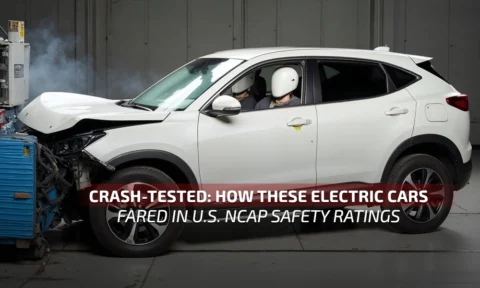Why a PA-Specific Checklist Matters
Welcome to another impending Pennsylvania winter! As we look toward the end of the winter season, proactive car winter preparation 2025 is more critical than ever. Waiting until the first snow flies on the Pennsylvania Turnpike or I-80 is a recipe for disaster, or at the very least, an expensive trip to your local mechanic.
This ultimate 2025 checklist is your definitive guide for winterizing your car in PA. We go beyond the basics, offering local insights and a comprehensive car maintenance checklist for winter that will ensure your vehicle is ready to conquer whatever the forecast throws at you, making PA winter driving safety a priority.
Let’s start with the heart of your vehicle’s winter defense.
Get Ready Engine, Fluids, and Battery
Your engine and essential systems are the most vulnerable to the punishing temperatures of a Pennsylvania winter. Proper fluid and power management is the first, non-negotiable step in your winter car maintenance in Pennsylvania.
Coolant and Antifreeze as lifeblood
When discussing how to prepare your car for winter in PA, the cooling system is paramount. Freezing engine coolant can crack your engine block, an almost catastrophic failure.
- The Critical Mix: For Pennsylvania’s cold, you need a 50/50 mixture of antifreeze and distilled water, which typically protects your engine down to approximately. So always check your owner’s manual for the specific type of your car requires. Mixing incompatible coolants can cause sludge and damage.
- The Hydrometer Check: Don’t just top it off—test it. Use an inexpensive antifreeze hydrometer or a professional refractometer to verify the freeze-protection level.
- The Flush: If your coolant is past its service interval (often 50,000 to 100,000 miles), schedule a full system flush.
- Testing is Key: Have your battery, charging system, and alternator professionally tested. Most auto parts stores or service centers can perform this load test for free.
- Corrosion Cleanup: Inspect the terminals. A clean connection ensures maximum power transfer for those difficult cold starts.
Tires and Traction: Gripping the PA Roads
From the black ice that forms silently on a clear night to the thick slush on unplowed backroads, your tires are your vehicle’s single most important safety feature. This is where your Pennsylvania winter car checklist can be a literal lifesaver.
The Tread Depth Lifeline
The legal minimum tread depth is not a safe minimum for winter.
- The Quarter Test: While the penny test works for legality, use a quarter for winter safety. The accepted safe minimum for snow is 4/32 of an inch.
- Uneven Wear: Visually inspect all four tires for uneven wear, which indicates a need for alignment or rotation. Bad alignment is severely amplified on slick roads.
Brakes: Stopping on a Dime
Your brake system needs to be in top condition to handle sudden stops on treacherous surfaces.
- Professional Inspection: Have your pads, rotors, and brake fluid checked. Road salt and slush can accelerate corrosion on brake components.
- Fluid Contamination: Have the fluid checked for moisture content and flushed if necessary as part of your car winter preparation 2025.
Visibility: Shielding Your Investment
Visibility is not just convenience; it’s about safety. And for Pennsylvania drivers, protecting your vehicle’s exterior from the infamous road salt is crucial for longevity.
Unbeatable Visibility
- Replace standard wiper blades with heavy-duty or beam-style winter blades.
- Switch to a freeze-resistant washer fluid
- Test your front and rear defrosters to ensure they’re functional.
- Ensure all headlights, taillights, and turn signals are clean and working.
Emergency Arsenal for PA Winter Driving Safety
No matter how meticulous your car winter preparation 2025 is, getting stranded is a possibility. A well-stocked emergency kit is a core component of your PA winter driving safety plan. This is a vital part of your winter car care guide 2025.
| Item | Importance for PA Drivers |
| Heavy-Duty Scraper & Brush | Essential for clearing thick snow and ice from all windows and the roof (a PA law for safety!). |
| Jumper Cables/Portable Jump Pack | Cold weather is brutal on batteries; this is your best chance of a self-rescue. |
| Warm Gear | Extra blanket, gloves, hat, and boots for every occupant. The cab can get cold fast. |
| Non-Perishable Snacks & Water | Energy bars, dried fruit. Keep a water bottle with a bit of space at the top to prevent freezing. |
| First-Aid Kit | Standard kit, plus any personal medications. |
| Traction Aids | A bag of kitty litter or sand (not salt!) can be thrown under spinning tires for instant traction on ice. Small folding shovel. |
| Emergency Signaling | Road flares or LED triangles, and a working flashlight with extra batteries. |
| Fully Charged Cell Phone & Charger | An old car charger permanently stored in the kit is a smart backup. |
Mastering PA Winter Driving
The final, and most critical, element of your Pennsylvania winter car checklist is you, the driver. Winter car tips Pennsylvania residents swear by often revolve around caution and awareness.
Understanding PA Road Conditions
- Look into especially on bridges, overpasses, and shaded parts of the road where temperatures drop first and fastest.
- The safest place to be is well behind it, letting it clear the road for you. Their visibility is often limited.
- Install the snowfall checking app. It provides real-time information on road closures, restrictions, and the location of plow trucks.
Drive Confident, Drive Safe
Winterizing your car in PA is more than just a seasonal chore; it is an annual commitment to your personal safety and the preservation of your vehicle against some of the country’s harshest and most corrosive winter conditions.
By following this ultimate 2025 checklist, from ensuring you have the correct antifreeze mix and the right tire tread to stocking a robust emergency kit, you complete your essential car winter preparation 2025. You’re not just maintaining your car; you’re adopting a mindset of preparedness that will make your winter commute less stressful and infinitely safer.
Don’t wait for the ice to form or the flakes to fly. Schedule your winter readiness inspection today and face the Keystone State’s cold with confidence. Have a Safe journey to Pennsylvania.
Frequently Asked Questions
Generally, when temperatures consistently drop below ~40 °F (~4–5 °C) and you expect snow/ice. Many drivers in PA put winter tyres on around November. Reddit threads in Pennsylvania suggest winter tyres are beneficial for cold and snow conditions.
It’s recommended to keep your tank at least half full. This helps prevent fuel-line freeze and allows the heater to run longer if you get stranded. PennDOT’s winter guidance includes keeping your gas tank at least half full.
They can be acceptable in milder snow zones, but if you cover hilly, heavy-snow or poorly-ploughed areas, dedicated winter tyres are safer. Local driver communities in PA advise winter tyres if you drive regularly in snow.
Items include ice scraper & snow brush, shovel, jumper cables, warm blanket/extra clothing, food & water, flashlight, first-aid kit, sand or cat-litter for traction, extra washer fluid, tow strap, and phone charger. PennDOT’s “Winter Driving Guide” lists these.
At least monthly, and after any major temperature drop. Cold overnight temps can lower pressure significantly, and under-inflated tyres reduce traction and increase wear.
Don’t let the weather put the brakes on your driving passion. Keep the winter car maintenance in Pennsylvania discussion rolling with Ask about Cars!!






